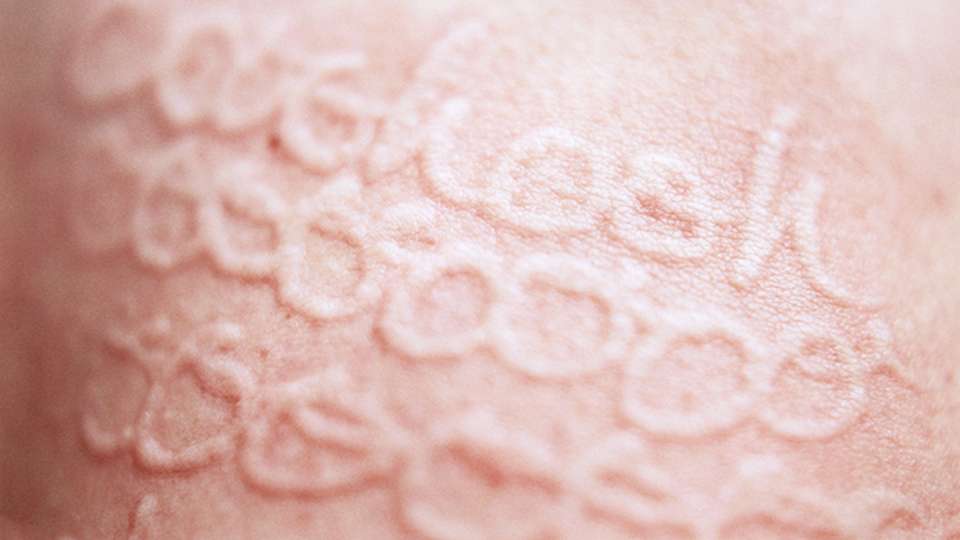If You Have This Condition, You Can Write on Your Skin—No Pen Required

The hives appeared the day after my two-week course of antibiotics ended. I lightly scratched an itch on my arm and, moments later, red welts surfaced along the path left by my fingernails.
Those welts faded within half an hour, but more quickly replaced them, taking the shape of whatever object provoked them. Unnerved, I did what any logical person would do: Search the internet. Apparently I had a condition called dermatographia, or “skin writing.”
“It’s probably more common than people think,” says Andrea Kalus, M.D., a dermatologist who practices at UW Medical Center Roosevelt. Doctors classify dermatographia as a type of urticaria, or hives, and suspect it is a histamine reaction.
“It’s like an alarm going off in the skin, alerting the immune system that there might be a breach in the wall. It allows extra blood flow and immune chemicals to come into the area,” Kalus says.
Doctors don’t completely understand dermatographia. It can be short-lived or chronic, severely itchy or mildly so. One recent study showed it can be a kind of “delayed hypersensitivity” reaction to penicillin, typically beginning six hours to several days after exposure. The authors note that amoxicillin can also cause a reaction after treatment ends—exactly what happened to me.
A Chronic Condition—and an Artist's Inspiration
For Ariana Page Russell, who has chronic dermatographia, the exact cause has been harder to pinpoint. Growing up, her skin was sensitive and flushed easily, and once she broke out in a rash after consuming one of her cousin’s bubblegum-flavored penicillin pills. She first noticed welts as a teenager but didn’t think much of them.
Russell was diagnosed in 2004 when she was a University of Washington graduate student in photography. While working on a project involving kelp, she scratched her knee and noticed kelp-shaped patterns on her skin. She photographed them.
“When I had peers and professors in for a visit, they didn’t care about the kelp photographs—they gravitated to the skin stuff,” Russell says. “I didn’t have any answers for them. They were like, ‘There’s something else going on here—this isn’t normal!’” She went to the doctor soon after.
Having a name for her welts was a relief, she says, as was incorporating them into her artwork in order to better understand them—and even find beauty in them.
“It definitely made me feel more confident about my skin,” she says.
Through her photography, she hopes to inspire others with dermatographia or similar conditions to embrace their skin the way it is and not feel ashamed of or embarrassed by it. She also runs a blog to help educate people.
“I tell people to turn it around, make other people see it in a positive way: ‘I can draw a picture on my skin: What can you do?’ Then you’re the one who has the power over it and how people see it,” she says.
No Cure and Little Research
Russell's dermatographia is less severe now, which she credits to a healthier diet and being selective about the products she uses in her home and on her skin.
Studies about dermatographia would be helpful for those who live with it, but funding is hard to come by, Kalus says. Research dollars typically go toward projects that have a greater perceived health impact.
Until more research can be conducted, treatment typically focuses on symptom management.
“Avoidance of triggers is important. Antihistamines can help with the itching, though non-drowsy antihistamines tend not to work as well. Topical lotions that cool the skin can be helpful,” Kalus says.
After a few weeks of uncomfortable, antihistamine-dulled existence, my dermatographia faded. I was lucky—though also sad to see it leave, in a way. I’d grown almost fond of the skin writing. For an English major enamored by the written word, there was something poetic about being able to etch secret, disappearing messages on my body.
But I definitely don’t miss the itching.

 Healthy ideas for your inbox
Healthy ideas for your inbox





